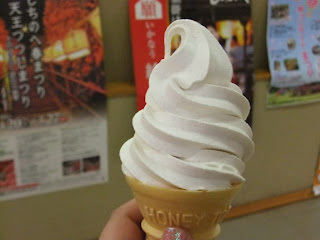Lee SeoJin, a famous actor, and popular both in Korea and Japan had made ceramics in the pottery “Tsugaru Kanayamayaki” in Kanagi area, Goshogawara City.
There was an exhibition of his ceramics in Aomori Museum of Art in February this year. Many fans who visited the museum then and those who couldn’t, both wished the exhibition to be held again, and there has started 2nd one in ASPAM, Aomori Prefecture Tourist Center in Aomori City.
As my office is the organizer of the exhibition, I luckily could see the venue before opening.
There are Lee SeoJin’s hand-made ceramics, his photos taken while engrossed in pottery by Cho SeiHon. You can also watch a video of TV program shot during his stay in Aomori (no Japanese or English subtitles though).
The exhibition is from May 18th to 27th at Aomori Prefecture Tourist Center. To know the details, go to the blog of my co-worker, Floren, http://blog.naver.com/pjs2457.
























